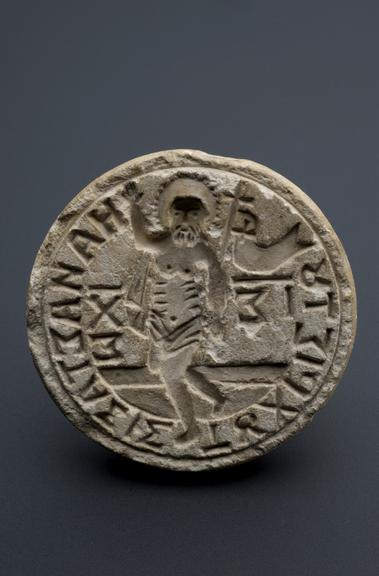

Limestone pharmacy seal for terra sigillata, Palestine, 100-1300 CE
- Made:
- 100-1300 CE in Palestine

Limestone pharmacy seal, used for stamping terra sigillata, Palestinian, 100-1300
Terra sigillata, or ‘sealed earth’, was a clay-like soil that was believed to have medicinal qualities. It was first used on the Greek island of Lemnos in around 500 BCE. It was usually prepared into cakes and then dried. The clay was then crushed into a powder and taken with liquids or made into a paste and smeared on the body.
Terra sigillata was believed to fight against a number of diseases, including plague, and was highly sought after during epidemics. To prevent fake clay tablets being sold, terra sigillatae were stamped with a seal of authenticity.
Details
- Category:
- Pharmacy-ware
- Collection:
- Sir Henry Wellcome's Museum Collection
- Object Number:
- A635014
- Materials:
- limestone
- Measurements:
-
overall: 35 mm x 61 mm .08 kg
- type:
- seal




